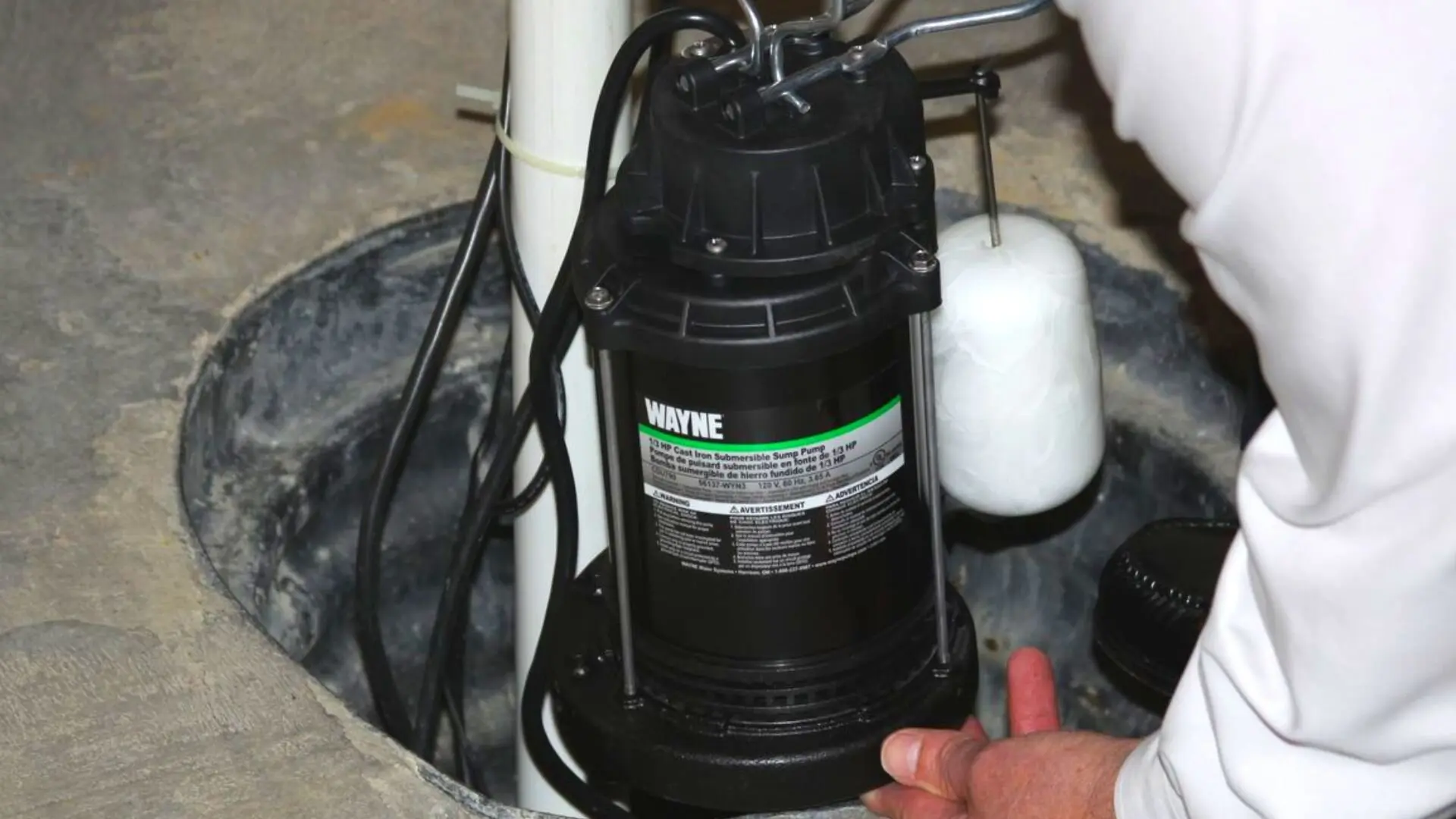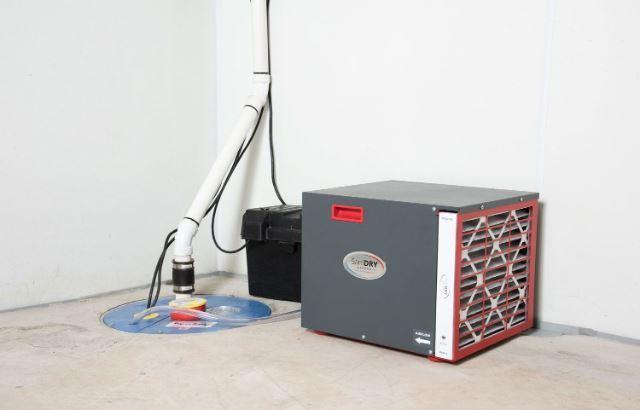We've come across this post about Cleaning & Maintenance Tips for Your Home's Sump Pump listed below on the net and figured it made sense to talk about it with you in this article.

Sump pumps are crucial elements in many homes, particularly in locations susceptible to flooding or excessive dampness. They assist prevent water damage by efficiently removing excess water from cellars or crawl spaces. However, like any other home appliance, sump pumps call for regular maintenance to guarantee they operate efficiently when needed the most. Cleansing your sump pump is an essential part of its upkeep, and comprehending just how to do it properly can save you from expensive fixings and prospective calamities.
Intro
Maintaining a clean sump pump is important for its appropriate performance and long life. Neglecting this crucial task can cause clogs, breakdowns, and ultimately, water damage to your residential property. As a result, learning exactly how to cleanse a sump pump is crucial for home owners that depend on these devices to keep their cellars completely dry and safeguarded.
Understanding the Sump Pump
Before diving right into the cleaning process, it's vital to have a fundamental understanding of exactly how a sump pump functions. Usually installed in a pit or basin below the cellar floor, a sump pump consists of a number of key components, consisting of a pump, a float button, and a discharge pipeline. When water builds up in the pit, the float switch turns on the pump, which then pumps the water out with the discharge pipeline, away from the building's structure.
Indicators of a Dirty Sump Pump
Recognizing when your sump pump requires cleansing is important for protecting against potential breakdowns. Some common signs that suggest a filthy sump pump include odd sounds throughout operation, reduced water circulation, and visible debris in the pit. If you notice any one of these signs, it's necessary to clean your sump pump without delay to avoid any additional issues.
Getting ready for Cleaning
Before you start cleaning your sump pump, it's important to take some safety precautions. Beginning by turning off the power to the pump to stay clear of any type of electrical mishaps. In addition, wear appropriate protective gear, such as handwear covers and goggles, to shield on your own from dirt, particles, and potential microorganisms.
Detailed Overview to Cleaning a Sump Pump
Turning off the Power
Begin by detaching the power supply to the sump pump to prevent any crashes while cleansing.
Getting Rid Of Particles and Dirt
Make use of a bucket or an inside story to remove any noticeable debris, dust, or debris from the sump pit. Dispose of the particles effectively to avoid it from clogging the pump or the discharge pipe.
Cleaning the Pump and Drift Switch Over
When the pit is clear of particles, carefully remove the pump from the pit. Inspect the pump and the float button for any kind of indicators of damages or wear. Make use of a soft brush or cloth to cleanse the surfaces and eliminate any type of built up grime.
Purging the System
After cleaning the pump and float switch, flush the sump pit with tidy water to get rid of any staying dirt or sediment. This will help make sure that the pump operates smoothly and efficiently.
Looking For Appropriate Functioning
Before reinstalling the pump, perform a fast test to make certain that the float switch activates the pump appropriately. Pour some water right into the sump pit and observe the pump's operation. If whatever is functioning appropriately, you can rebuild the pump and reconnect the power supply.
Upkeep Tips to Keep Your Sump Pump Clean
In addition to regular cleansing, there are numerous upkeep pointers you can comply with to maintain your sump pump in optimum condition:
Final thought
Cleaning your sump pump is a vital aspect of its upkeep and ensures that it runs effectively when you need it one of the most. By adhering to the actions outlined in this guide and integrating regular upkeep into your regimen, you can prolong the life expectancy of your sump pump and safeguard your home from water damage.
6 STEPS ON HOW TO CLEAN A SUMP PUMP PROPERLY
UNDERSTANDING SUMP PUMPS
Your sump pump plays a crucial role in protecting your home by managing and removing excess water. It primarily functions as a “shield”, guarding your basement against the damaging effects of water accumulation. The pump is housed in a sump pit in the lowest part of your basement, and its job is to pump out any water that collects there.
During heavy rainfalls or when snow melts rapidly, water can infiltrate your basement, posing potential risks like flooding, structural damage, and harmful mold growth. Here, the sump pump springs into action, pumping out the intruding water and directing it away from your home.
SAFETY FIRST
Before cleaning, remember to prioritize safety. Disconnect the sump pump from the power source to prevent any accidental electric shocks. Also, wear sturdy gloves to protect your hands from any sharp or dirty components within the pump.
REMOVE THE SUMP PUMP
After ensuring your safety, the next step is to remove the sump pump from its pit. Doing this might require careful maneuvering as you don’t want to damage any pump components. Once removed, clean the sump pit to remove any accumulated debris or sludge.
INSPECT THE PUMP
Inspect the pump for any visible signs of wear or damage. Check the power cord, float switch, and impeller housing. If any components look worn out or damaged, consider replacing them to ensure optimal performance.
CLEAN THE PUMP
Thoroughly clean the pump with warm, soapy water. Make sure to rid it of any dirt, gravel, or other debris that might impede its performance. You can use a toothbrush to clean the small, hard-to-reach parts of the pump.
REINSTALL THE SUMP PUMP
Reinstall the pump into the sump pit Make sure it’s positioned correctly to remove the water effectively Once it’s back in place, reconnect it to the power source TEST THE PUMP
Finally, pour some water into the pit to ensure the pump works correctly. It should start automatically and begin pumping out the water; if it doesn’t, check the power source and the positioning of the pump.
Remember, while cleaning your sump pump is an essential part of home maintenance, hiring a professional plumber for a thorough inspection and cleaning at least once a year is also important. This will ensure that your pump is in optimal condition, ready to protect your home from potential water damage.
BEST PRACTICES FOR CLEANING SUMP PUMP DISCHARGE PIPES
Regular Inspection: Regularly inspect your discharge pipes, especially during heavy rainfall or snowmelt periods. Look for any signs of blockage or damage. Early detection of problems can prevent serious issues down the line. Periodic Cleaning: Over time, sediment and debris can accumulate in the discharge pipes, impeding the flow of water. Regular cleaning helps keep the pipes clear and functioning efficiently. You can use a high-pressure water jet to effectively clean the pipes. Insulation During Winter: In colder climates, discharge pipes can freeze, blocking the outflow of water. Protect your discharge pipes from freezing temperatures by insulating them with foam pipe insulation. This will ensure the sump pump can continue to discharge water even in freezing conditions. Proper Positioning: The discharge pipe should be positioned to direct water away from your home’s foundation. Improper positioning can lead to water seeping back into the basement. Ensure the pipe is long enough and angled correctly. Installation of a Check Valve: A check valve prevents water from flowing back into your sump pit after the pump has pushed it out. Installing a check valve helps maintain the efficiency of your sump pump and reduces the risk of flooding. Minimize Pipe Turns: Every curve or turn in the discharge pipe can decrease the efficiency of water flow. By minimizing turns and bends in your discharge pipe, you can increase the efficiency of your sump pump. https://www.fullspeedplumbing.com/how-to-clean-a-sump-pump-properly9999/

Do you appreciate more info about Cleaning & Maintenance Tips for Your Home's Sump Pump? Leave feedback directly below. We'd be pleased to find out your feelings about this page. We hope to see you back again in the future. Are you aware of somebody who is in the market for the subject? Be sure share it. We thank you for your readership.
Information Here